WOMEN IN BASKETBALL
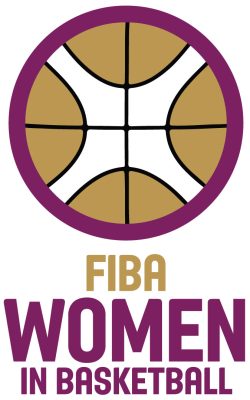
WOMEN IN BASKETBALL
As part of its aim to increase the role of females at all levels of the sport, FIBA began working on this important part of its global strategy in 2019 and is making significant progress in its endeavors. At the recent XXII FIBA Congress in 2023, the focus on Women in Basketball was strengthened with the approval to further develop this priority for another four years.
With surveys, analysis and assessment of the current status taking place as initial action points in 2019, FIBA also completed the Women in Basketball Survey in 2020, which has provided updates on key activities for Regional Offices and fact sheets detailing specifics for each National Federation, as well as a global snapshot.
There are six goals developed for this priority, which act as development focus areas and are underpinned by various initiatives and programs.�
Women in Basketball (WiB) is currently one of the main priorities in FIBA’s overall strategy. Below is a video that introduces WiB’s strategic goals, objectives, and actions to both internal and external stakeholders.
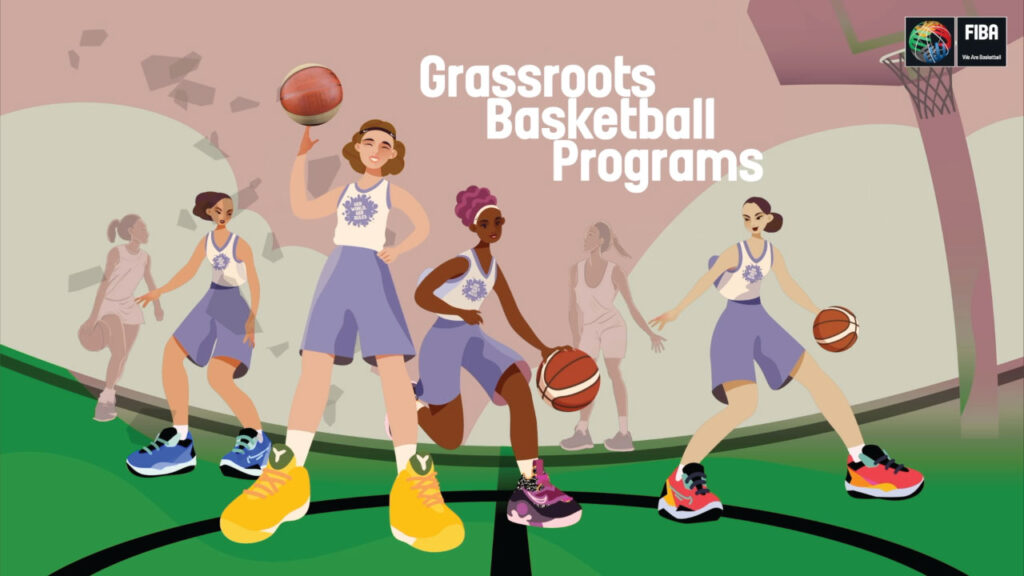
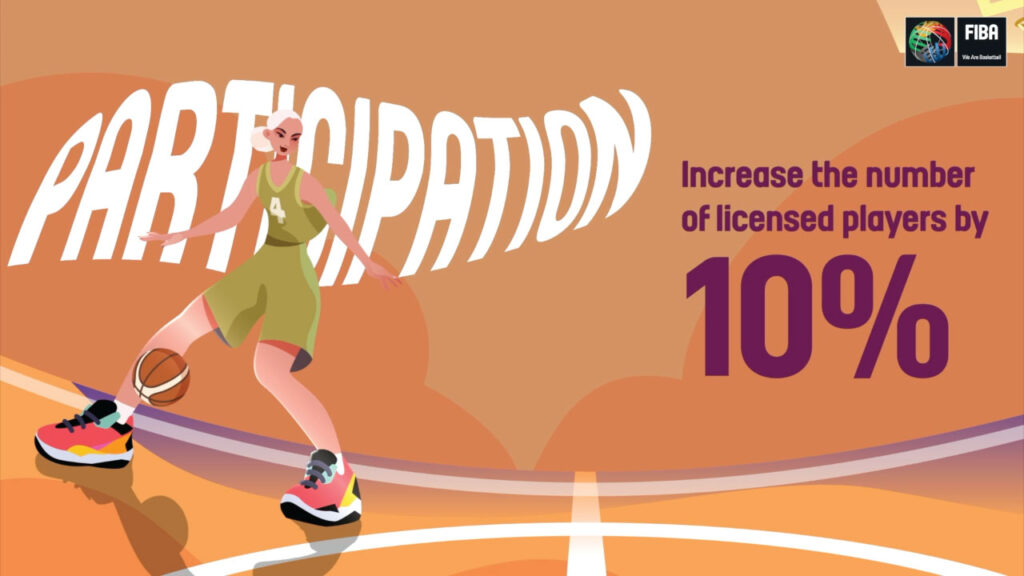
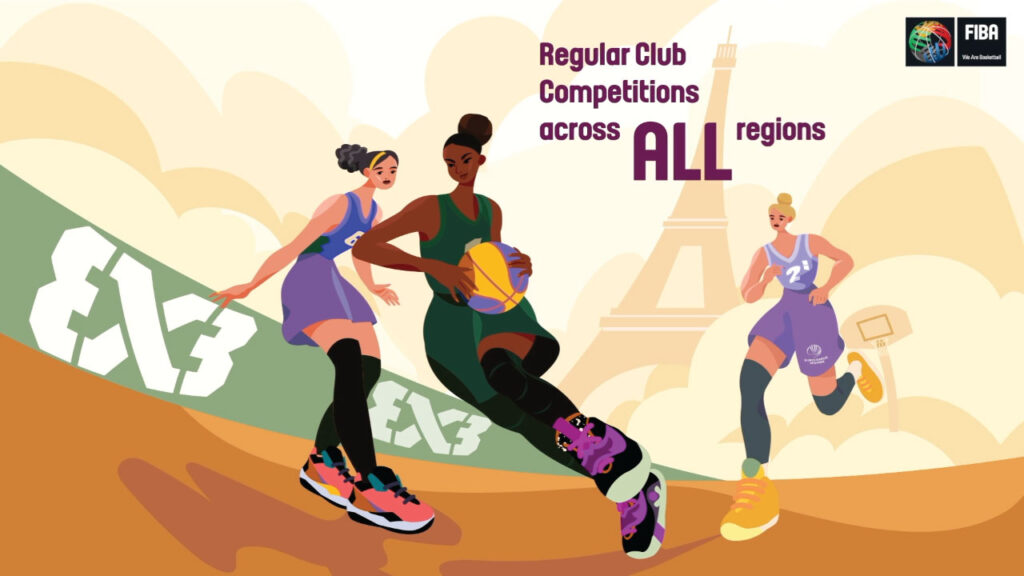
1. Increase Female Players Participation
Her World, Her Rules
One program aimed at increasing the number of female players is the ‘Her World, Her Rules’ campaign, created by FIBA Europe in 2018 to get more girls aged six to 15 playing basketball.
Using social media as a driver, the program promotes women’s and girls’ basketball through various activities in partnership with National Federations.
During the 2019-2023 cycle, 120,000+ girls from over 115 National Federations participated in the campaign globally across FIBA’s regions, which is using star female players as ambassadors. TCL, FIBA’s Global Partner, announced its support of the program as well with its Break & Believe campaign in 2022.�
Click here for more information about the Her World, Her Rules campaign. �
FIBA Players’ Mentorship Program
To decrease the dropout rates of players at a young age, especially young women, FIBA launched the FIBA Players’ Mentorship Program�in 2021. Under the guidance of the FIBA Players’ Commission, the program trains individuals to provide players with necessary off-court support. In total of 28 former female players have enrolled in the program to date.
FIBA’s Women’s Basketball Strategy & Planning Webinar
More than 150 participants representing 88 National Federations took part in the webinar held across three days. The webinar was created to provide participating Federations with various tools and recommendations on individual strategies to help build a WiB strategy in their own country.
�
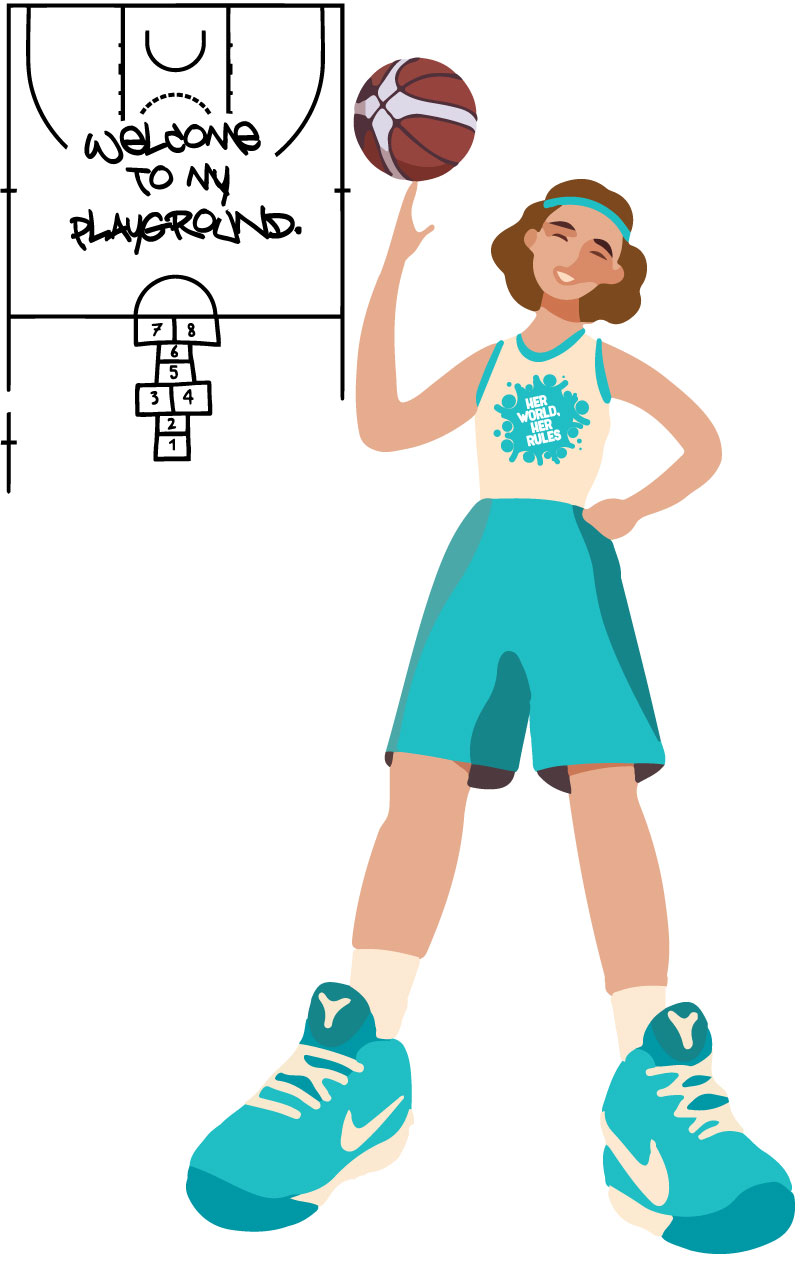
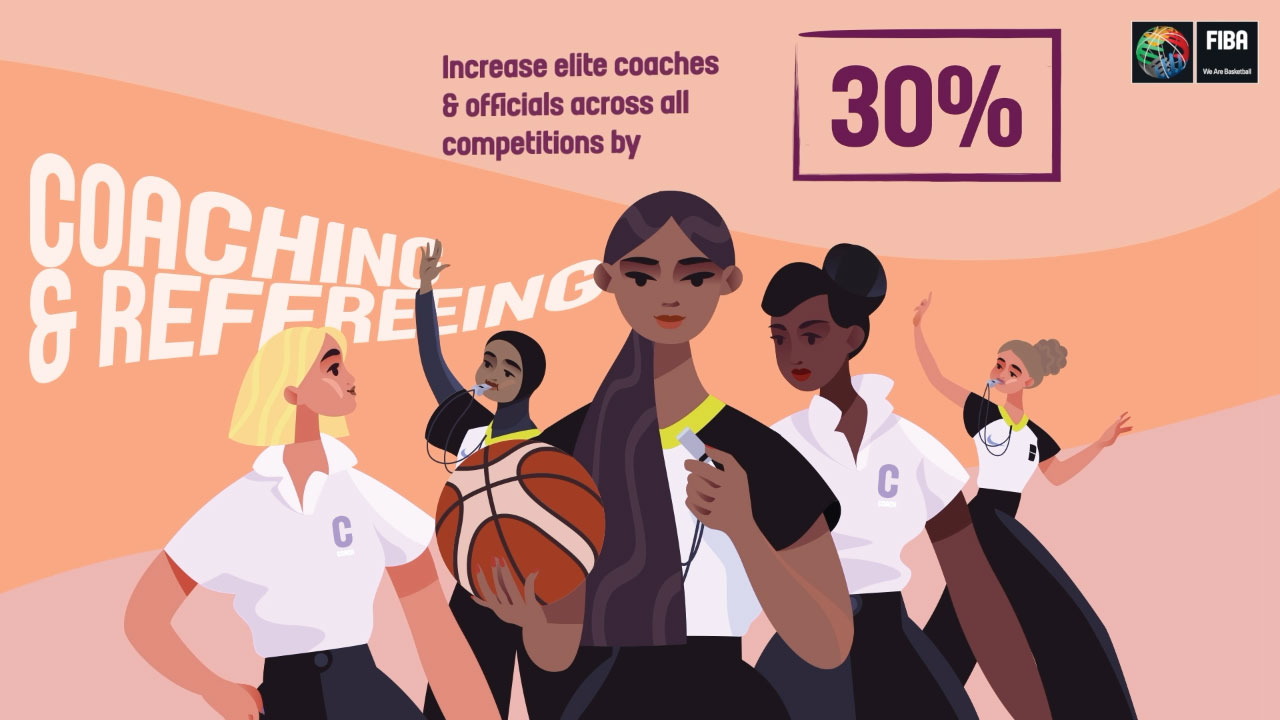
2. Develop and Leverage Female Coaches and Officials
Coaches
There are numerous programs and initiatives currently in place that include:
A pilot program for mentoring elite-level coaches�was launched in 2021 in Europe. The program runs for one year and selected participants take part in a range of different activities, including�placements, periods of training and study, plus job shadowing and access to mentoring.
Under a rule adopted in 2020, national teams are required to have at least one female coach on the bench in all FIBA women’s youth competitions.
At the FIBA Women’s Basketball World Cup 2022, female coaches led all three medal-winning teams.�
A first-ever FIBA World Association of Basketball Coaches Level 1 Female Instructor Course took place in 2022 in Dubai, UAE.
Game Officials
With a clear focus on increasing the number of officials for National Federations, especially in terms of female candidates, FIBA’s Central Board approved the allocation of an extra female referee license for every National Federation for the Game Officials License period of 2021-23 and also the new cycle of 2023-25. More details here.�
Additionally, as part of its efforts to encourage more female coaches and referees, FIBA launched an initiative aimed at removing potential obstacles for female officials. The FIBA Referee Maternity Plan, which was introduced in 2023, focuses on providing guidelines for National Federations to ensure that female referees are included fully in their officiating careers, even during maternity leave.
In 2023,FIBA launched the first Global Women in Officiating Camp providing female referees worldwide with professional development and formal training.
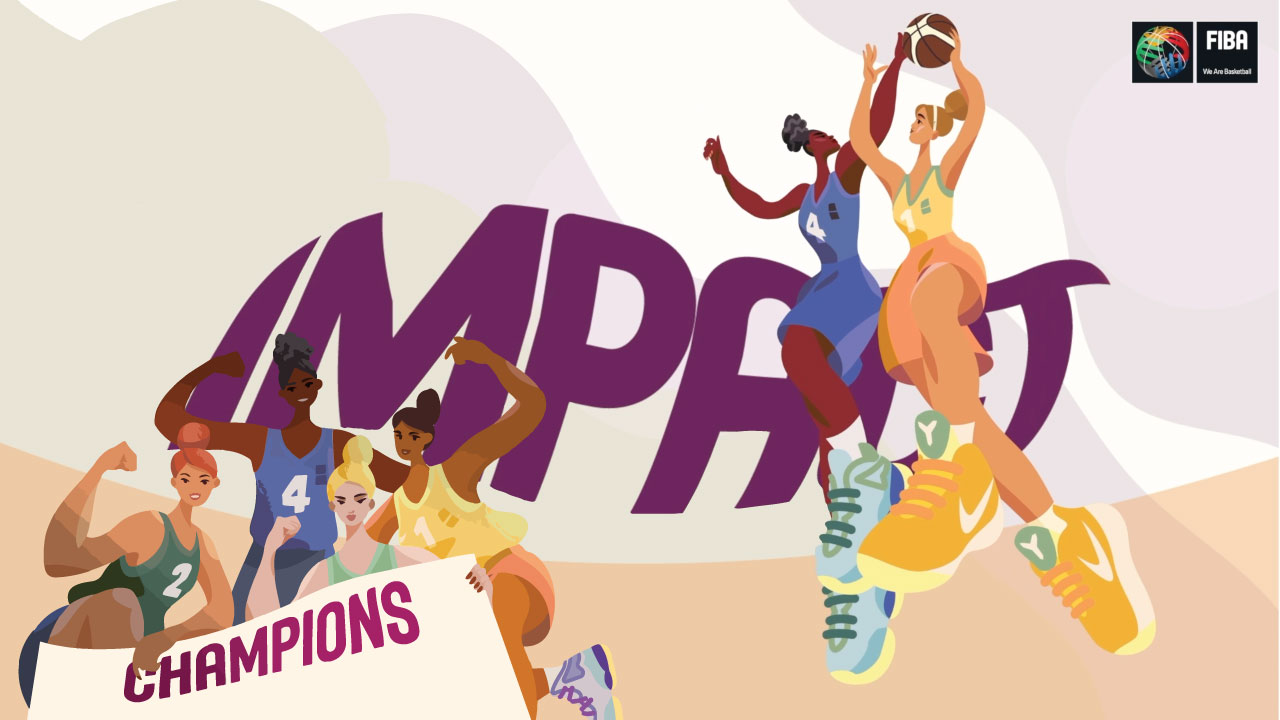
3. Maximize the Impact of Women’s Competitions in both disciplines
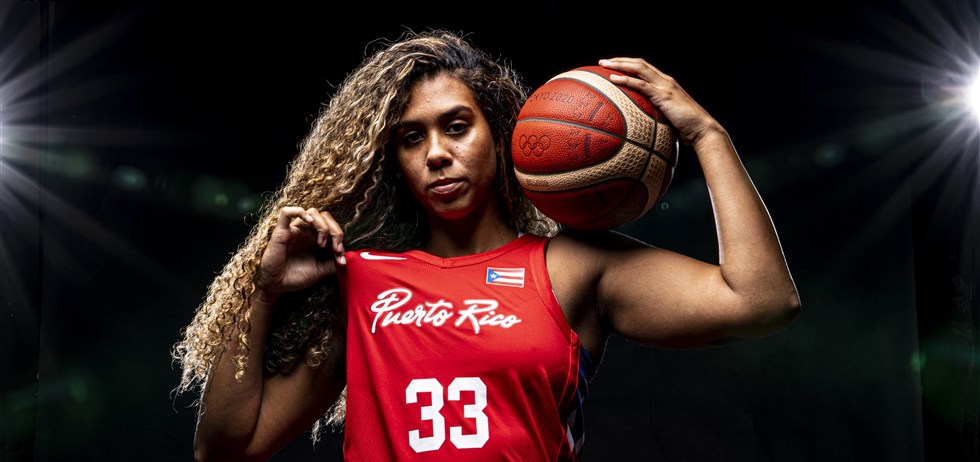
FIBA is committed to raising the profile of the FIBA Women’s Basketball World Cup and regional qualifying competitions.
Plans are being established for club competitions in other regions, including an official club competition in the Central America and Caribbean region. FIBA’s newest women’s league to commence is the Women’s Basketball League Americas (WBLA), launched in September 2023 and developed to bring together the top women’s clubs on the continent from seven different countries.�
A new competition system has been approved for 2026 with the expansion of the FIBA Women’s Basketball World Cup 2026 to 16 teams and the roster of the Women’s World Cup Qualifiers to 24 teams qualified from the respective Continental Cups across the Regions.�Pre-Qualifiers (Centrobasket Women’s Championship and Centrobasket Women’s Qualifiers: CBC Women’s Championship and COCABA Women’s Championship) have also been added to the women’s calendar, giving a select number of teams that did not qualify for the previous World Cup and Olympic games an opportunity to reach the subsequent qualification tournaments.�
FIBA continues to work on building the profile of the 3×3 Women’s Series – which was introduced in 2019 and started offering prize money in 2021. In 2023 the series was expanded to 23 events (up from 12 in 2022 and seven in 2021), with the introduction of new teams in 2022 being backed by either National Federations or private promoters. The season total prize money now surpasses USD 1M – a first for the series.

4. Increase the Number of Fans Consuming Women’s Basketball
Fans can expect to see major changes in the way international women’s competitions and female players are portrayed and promoted as FIBA develops a female-focused commercial strategy.
FIBA has developed Portrayal Guidelines to promote gender equality and inclusive representation in sports worldwide and continues to make efforts to partner with companies such as Google and TCL to increase the visibility of women’s games. Google became FIBA’s first-ever Global Partner of Women’s Basketball and the FIBA Women’s Basketball World Cup in 2022.
Various programs to increase the number of women involved off the court, such as She Calls Game for female commentators�and the FIBA Women’s Photography Program, took place in 2022 in the lead-up to the FIBA Women’s Basketball World Cup in Sydney, with fans experiencing a marked increased exposure of the women’s game on FIBA’s digital channels and television coverage with exciting content during the recent World Cup.
Notably, FIBA experienced unrivaled broadcast, attendance, digital and social media numbers�from the FIBA Women’s Basketball World Cup 2022, with a whopping 145,000 spectators, meaning the FIBA Women’s Basketball World Cup 2022 had the highest attendance ever at the competition.
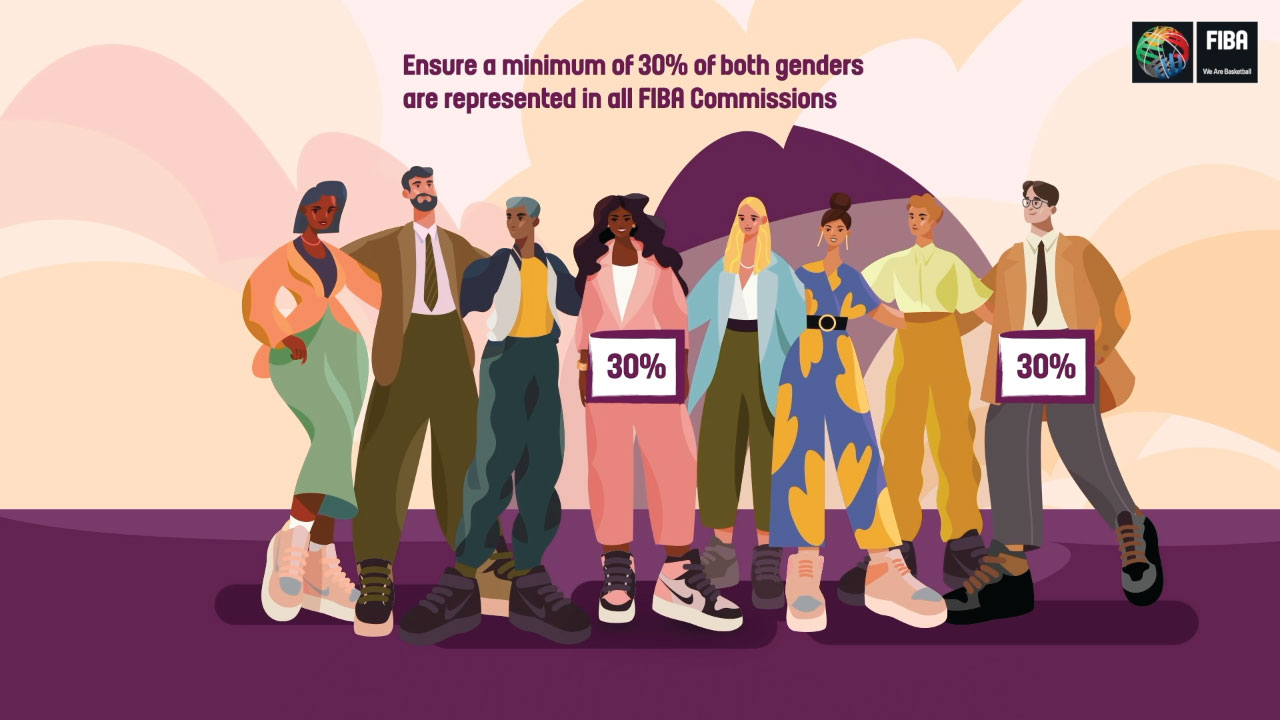
5. Increase Gender Diversity in National Federations and FIBA Elected Bodies
Various initiatives and programs are currently in place on both global and regional levels with the aim of increasing gender diversity in all governing bodies at both FIBA and National Federation levels.
At the FIBA Mid-Term Congress in 2021, the Central Board presented a set of proposed amendments to the FIBA General Statutes that include the promotion of participation of women at all levels of basketball governance becomes part of FIBA’s mission, that both genders shall be represented on the Executive Committee; and that each gender shall be represented by a minimum of 30 percent of the members of each Commission. These three actions were approved by FIBA’s 212 members. In 2023, for the working cycle of 2023 to 2027, the Central Board appointed 35 percent of women across all FIBA Commissions.
�
Leadership Programs
Supporting the next generation of female leaders, FIBA’s women in leadership programs, WiLEAD and Adelante, focus on management and administration while also increasing gender diversity and creating new pathways and support networks across the regions. �
